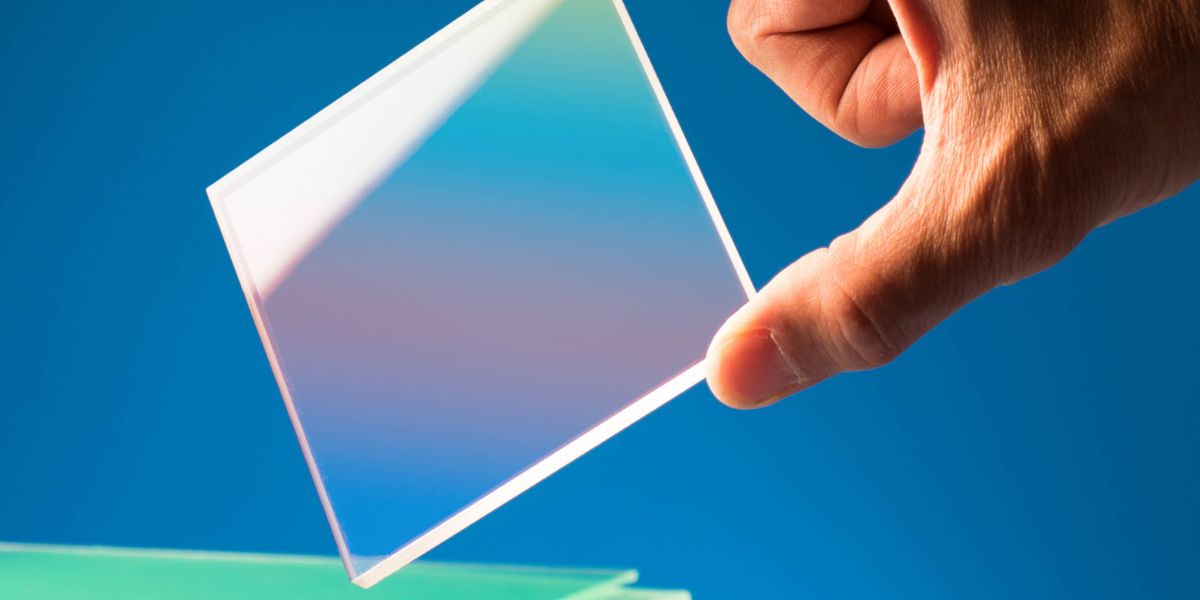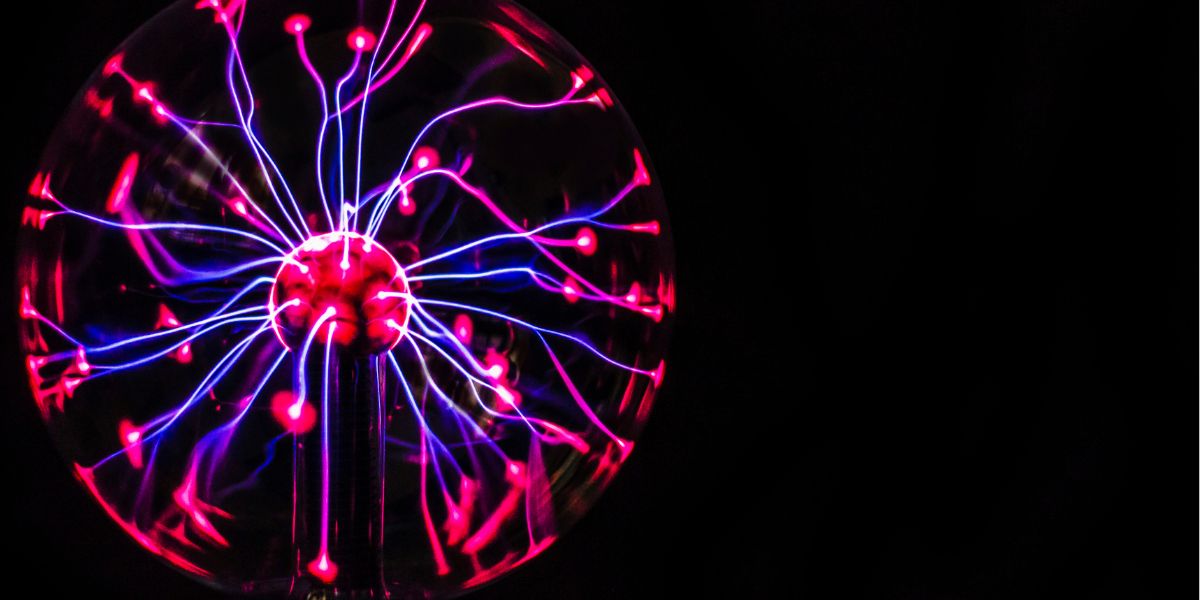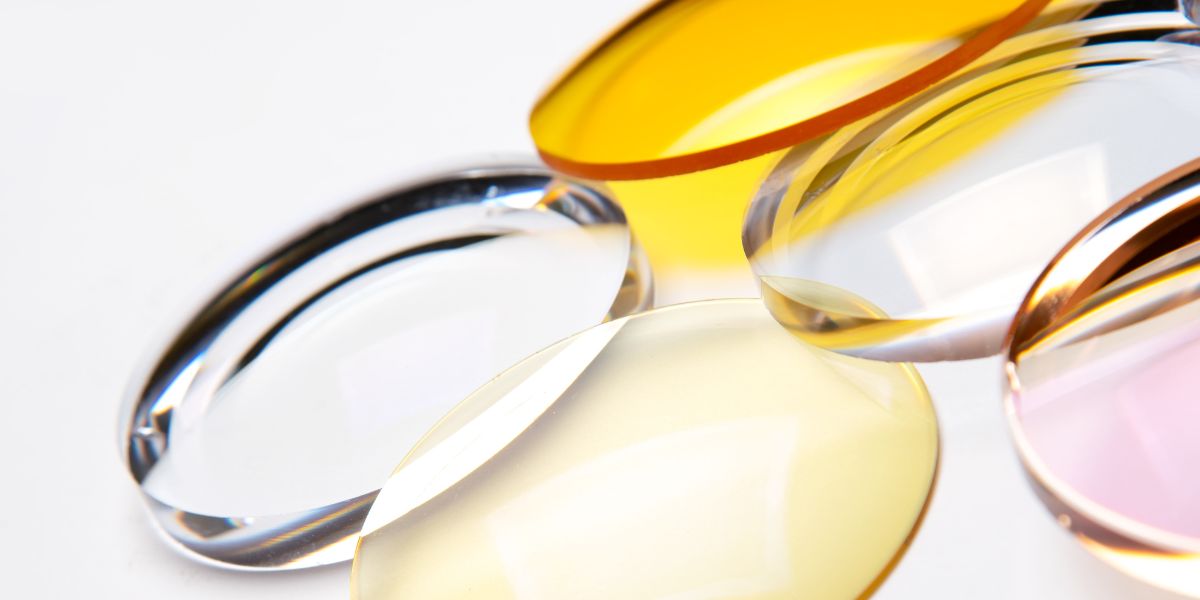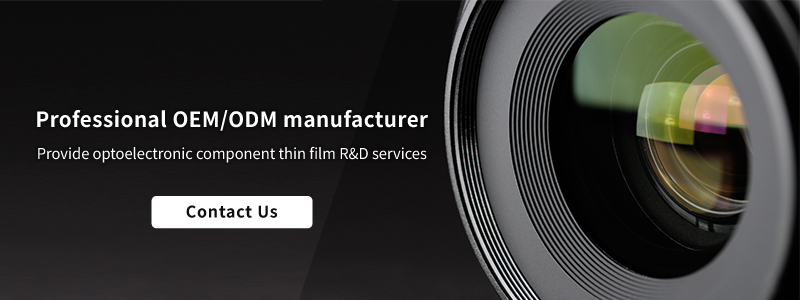- Home
- Blog
- Optical Coating
- What is the Principle of Optical Coatings?
What is the Principle of Optical Coatings?

When it comes to optical coating, many people may find it unfamiliar. In fact, optical coating is a critical technology with extensive applications in terms of glasses, camera lenses, mobile phones, smarwatches, chip designs, and car body related equipment. In this Article, we will be exploring the technical principles, manufacturing processes, and applications while intorducing the common materials of optical coatings. We will also be discussing how optical coatings affect the performance of optical devices will be analyzed to help you have a better understanding of optical coating technologies.
What are optical coatings?
An optical coating process is a common part in manufacturing of precision optical products. The coating usually consists of a multilayer stack and the performance indexes (including high reflectance rate, splitting rate, filtering rate, anti-reflection rate, etc.) are affected by those film layers regarding the thickness of each layer and the refraction index of different film interfaces. The principle is to create an interference effect in the optical system to alter the way how optics reflect, transmit, scatter, and absorb light .Optical coatings can be extensively applied on surfaces of optical components such as lenses, mobile phones, camera lenses, optical filters, optical instruments, and wafers.
Common optical coating technologies
There are numerous methods of creating optical coatings and they can be generally classified in to liquid phase deposition methods and vapor phase deposition methods. Those deposition methods have been widely applied on different materials to creat multilayer dielectric films, metal films or a metal-dielectric multilayer stack to meet optical specifications for specific wavelengths while improving precisions, sensitivities, and image resolutions. In the following section, common coating technologies and characteristics will be introduced. It should help you choose a proper coating method that meets your needs.
Plasma sputtering

Plasma sputtering covers a variety of technologies such as advanced plasma sputtering and magnetron sputtering. The technique is to deposit thin films by energetic particles of a plasma. The optical coating is created by applying a high electric potential difference in a low vacuum environment filled with argon gas to generate a glow discharge or a plasma which consists of positive ions while the bombardment of positive ions will release atoms or atom clusters, depositing thin film coatings on substrates. The advantage of plasma sputtering is that it obtains a better coating adhesion due to the substrate bombardment by relatively high-energy ions
IBSD (Ion Beam Sputtering Deposition)
For IBSD, a high-energy electric field under high vacuum conditions is applied to generate a relatively focused ion beam to strike and sputter a target of material at a high deposition rate. The ion beam energy generally reanged from 800V to 1500V hits the target material and forms an optimized thin film on the surface of the substrate. In conclusion, IBSD has advantages in high repeatability and high accuracy.
IAD (Ion-beam Assisted Deposition)
IAD is characterized by greater kinetic energies and greater mass ions, electron neutralization that prevents discharge damages, and high purity of thin films fabrication under high vacuum conditions. The other advantages of IAD includes independently regulated ion voltages, currents, bombardment angles, and diffusion angles. There are various ways to evaporate atoms or tune the molecular energy levels, including UV-irradiations, thermal heats, ion plating, laser cladding, and plasma ion-assisted coatings.
In the past, under a high atmospheric pressure, air bubbles could get entrained while coating, discharge damages could happen due to charges of ion and cause defects on the coating surfaces. IAD has been utilized in recent years as one of the ways to achieve a finer coating surface since it is a technique equipped with remote plasma system controls, fabricating films under a very high vacuum pressure and using ions tocompensate for electronic charges during the deposition process by bombardment.
Evaporation deposition
During evaporation deposition, the target material is evaporated by heat or by electron bombardment. The evaporated material strikes the optical substrate, sticking to it as a strong and high dense thin film. The thin film quality depends on several factors, including heating rates, vacuum rates, substrate positions, and rotation speeds of a substrate holder. To achieve a stable film thickness uniformity, it is essential to control the above factors that influence thin film qualities during deposition.
One of the properties of evaporation deposition is that it is a relatively gentle deposition method, tending to cause thin films to become low dense and more porous. Owing to its high water absorption capacity, refractive index values could be reduced and reflection performance of a thin film could be diminished. Therefore, to optimize film properties of evaporation deposition, IAD technology can be an aid to guide an ion beam sputtering a target in proximity to the substrate surface to improve the adhesion of thin films.
ALD (Atomic Layer Deposition)
The difference between ALD and evaporation deposition technologies is that ALD is a gaseous thin-film deposition technique instead of sputtering from a solid target. ALD is usually conducted at high temperature.
Gaseous precursors react to deposit thin atomic or molecular layers on a substrate. The thickness of an ALD film and opticals designs can be controlled precisely, making it ideal for micro-nano manufacturing and microelectronic device applications that require precise thin film thickness control. However, ALD does have the disadvantage of being very slow.
Subwavelength-structured surface
The essential difference between a subwavelength-structured surface design and a conventional optical coating desing is that a subwavelength-structured surface is fabricated by modifying surface morphology of a substrate. Patterns on a subwavelength-structured surface can be a regular pattern generated by lithography, or a random pattern generated by plasma etching.
Common materials for optical coatings
An optical coating often consists of multilayer films of various materials such as materials with low refractive indexes (e.g. silicon oxide or magnesium fluoride) and materials with high refractive indexes (e.g. titanium oxide or tantalum oxide). In addition to high refractive indexes, high refractive index materials have more stable chemical properties. Moreover, those materials exhibit characteristics such as water insolubility, well hydrophobicity, strong adhesion, and low electrical conductivity; therefore, those materials are often applied in semiconductor component manufacturing and oil repellent film coatings, etc. Materials with low refractive indexes possess well adhesion, scratch resistance, and acid-alkali resistance while they have stable chemical substances so that they are not particularly reactive to other materials or and offer greater resistance to chemical deterioration. Based on factors including materials and processe, optical coating desings with specific optical specifications can be achieved in practical.
What are the applications for optical coatings?
Livelihood applications

Optical coatings are extensively applied in various livelihood products such as glasses, mobile phones, cameras, surveillance equipment, decorative color coatings in automobile, head-up displays in automobile, monitors in automobile, industrial control equipment, wearable devices, domestic appliances, and lighting devices, etc. Not only can those optical coatings improve product performances, but also make everyday life more convenient and comfort in daily life. Specifically, anti-reflection coatings on glasses can reduce unwanted reflections and glares, increasing your visual clarity. Anti-fingerprint and anti-reflection coatings on smartphones and tablets can reduce the visibility of fingerprints and provide high clarity. Optical coatings on camera lenses can enhance light transmittance and produce clear images. Optical coatings for domestic appliances can improve optical performance of displays or lighting devices.
Application of scientific technologies
Optical filters
Optical filters are devices offer multiple functions and applications, which are mainly used to filter or block the light of specific wavelengths or bands, so the light transmittance of optical components can be improved or the color of light can be adjusted. Common filters consist of laser wavelength filters, infrared long pass filters and infrared band-pass filters. When applied in a series of laser instruments and equipment, laser filters rule out single or certain wavelengths. With optical elements of specific wavelengths, there are advantages such as wide blocking range and high blocking rate, as well as accurate wavelength positioning, high penetration rate and reliable performance. Such filters are mostly applied in biochemical analysis instruments, laser analysis instruments and medical laser equipment. For infrared long-pass filters and infrared band-pass filters, mono-crystalline silicons are mainly used as substrates for the advantages of high blocking rate, high transmittance, strong film adhesion, well smoothness, minor absorption, stable and reliable performance, which are applied in sensitive components to temperature measurement characteristic, gas detectors, optical detectors, automotive sensors and wellness smartwatches.
AR (Anti-Reflection) coatings
AR coating is a type of optical coating on the surface and is also a technology based on the principle of light interference. The coating of nano-scale anti-reflection is mainly applied onto the substrate surface to achieve an improved effect of optical display by reducing light reflection and scattering. Major applications include optical components for lenses, tablets and mobile phones to assist with sharper and clearer images on the devices, while enjoying visual experience at better quality.
Conclusion
Through the detailed introduction in this article, we are confident that you have gained a deeper understanding of optical coatings. The application of optical coating technology in glasses, camera lenses,and optical fiber communication devices has become progressively extensive. The technology itself also gets updated and improved constantly; the manufacturing process will not only be more advanced, but can also achieve better performance at the same time. Yang-En Tech Co., Ltd. has more than 15 years of integrated experience in designing and manufacturing multilayer optical films. We provide coatings of various materials, glass processing, grinding, modulation of chemical agents and relevant services. By cooperating with domestic coating factories and partners overseas, as well as possession of evaporators and various jigs under domestic and foreign renowned brands, most of our products manufactured are widely applied in mobile phone cameras, digital surveillance cameras, industrial control equipment, automotive tablets, wafer products and optical products for satellite projects in space. Should you have any requests for optical coatings, please do not hesitate to contact us!

